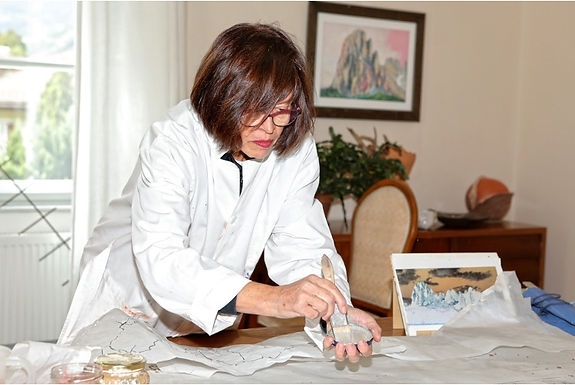zurück

current events
Women's Day Concert
with the Young Talents
Anna Fink and Simon Oberrauch
in cooperation with the Klausen Education Committee on March 9, 2025


Annual General Meeting
and short presentation by Christoph Gasser
"It was very nice, I was very pleased."
Anecdotes from Klausen's Inn History

Brochure "Cultural Treasures of Chiusa"
and quiz in collaboration with schools
56 cultural assets in Chiusa and Säben, compiled in three languages in one brochure
Digital quiz with schools on the most beautiful cultural treasures in collaboration with the Chiusa Education Committee will be implemented in 2025/2026

Call for Proposals "Moving Life" Looking for old 8mm films from the 1960s and 1970s in Klausen
With this initiative, the Klausen Cultural Heritage Association aims to secure and preserve a piece of our town's contemporary and cultural history. This is the only way to convey life in the 20th century in all its facets to future generations. Will be realized in 2025/2026.

on July 20, 2025
Guided tours by Roman Demattia, Sepp Krismer, Elsa Gantioler, Lukas Krismer, 10.30 a.m. - 4.30 p.m.
As early as 1233, the malgrei of Faray in the district of Gufidaun is mentioned in a written document. At that time, there is no evidence yet of a healing spring or bath, but a legend tells that Saint Theobald spent some time here as a hermit and was healed of an affliction by the curative waters.
Although Theobald (†1066) likely never set foot in Tyrol, the foundation legend makes him the patron saint of Bad Froy, and the chapel built there is dedicated to him.
The first mention of a padmaister (bath master) in Frayen dates to 1547. An illustration of the site from 1654, preserved in the old chapel, shows a bathhouse to the left of the stream, near the iron-rich spring, and a chapel on the right side of the Froy stream.
The growing number of visitors—by the mid-19th century, around five hundred annually—led to the expansion of the bathhouse, which eventually extended across the stream.

Studio Talk
with Sonya Hofer
October/November 2025

Book review
with Paul Rösch
October/November 2025

Lecture
by Gustav Pfeifer (South Tyrolean Provincial Archives)
on October 23, 2025
“Castle Gate,” City Wall, and Cemetery. New Documentary Evidence on Klausen around 1300"
Charters are among the most essential written sources from the Middle Ages. These are typically documents written on parchment or paper, authenticated by witnesses, seals, and/or notaries, and concerning legal matters.
Beyond the legal act itself, they can also record facts that are of broader historical significance.
The focus of this lecture will be a little-known charter from the year 1304. It contains what are currently the earliest known references to the city wall enclosing the core of Klausen and to the cemetery near St. Andrew’s Church. It also includes the first written mentions of mills and a public bathhouse in the southern suburb. Finally, it provides the oldest known written record of the so-called "Castle Gate," the earlier name of the Brixen Gate.
These references to key urban elements show that Klausen should not be considered a city only from the time of its first explicit mention as such (in 1308). Rather, the process of becoming a city was a gradual development that had already begun earlier.
(Photo: Alessandro Campaner, South Tyrolean Provincial Archives)

